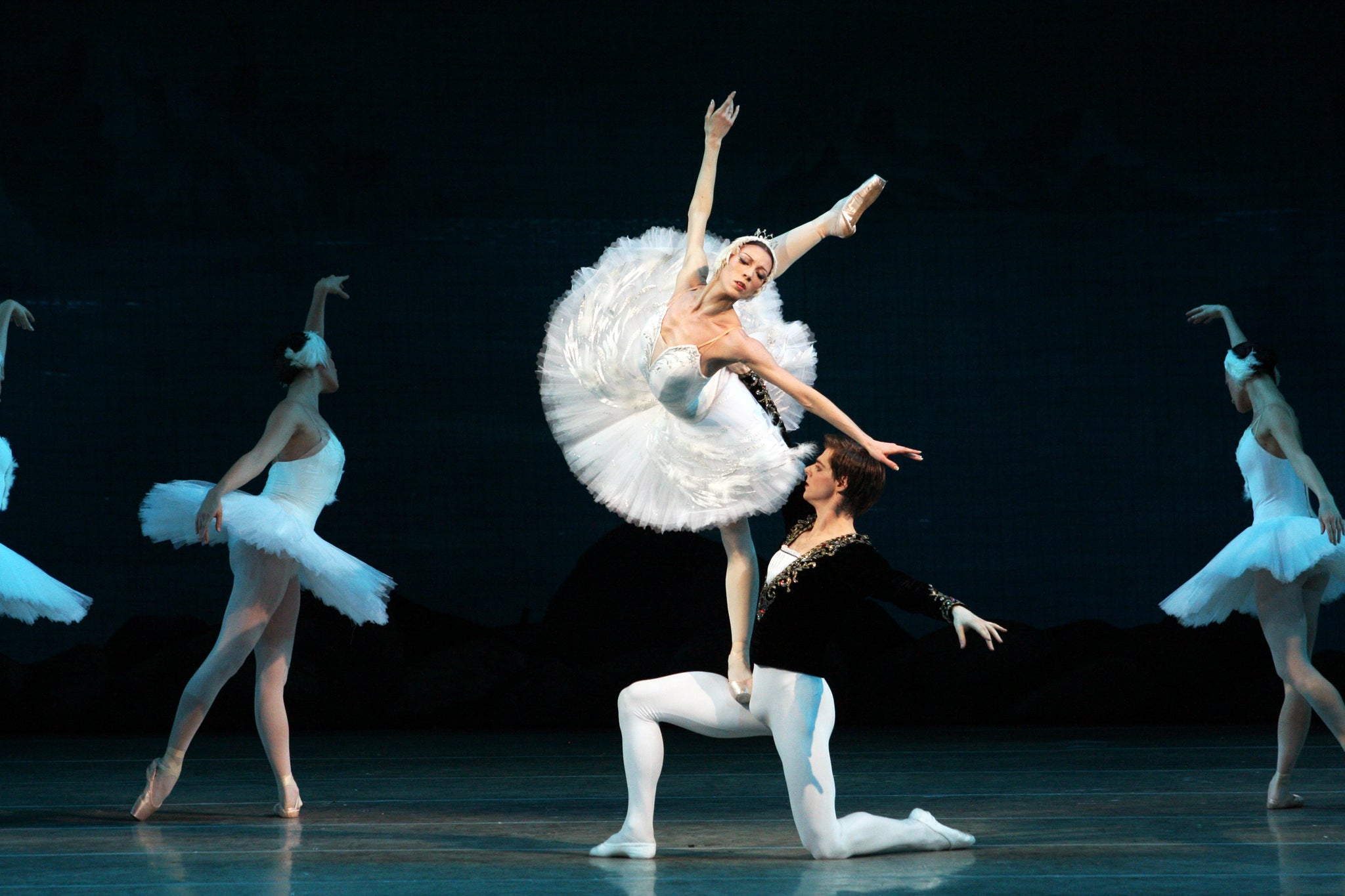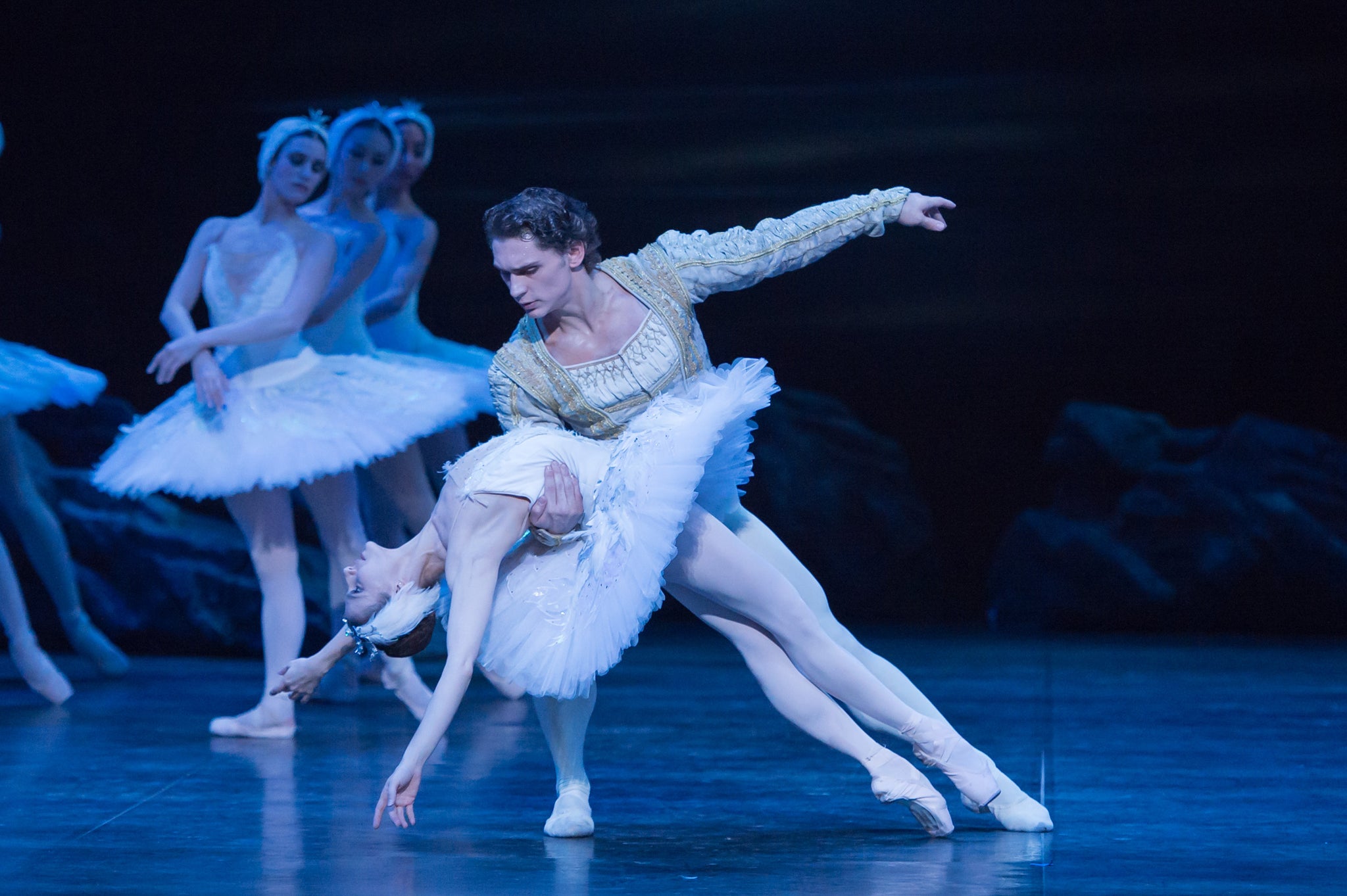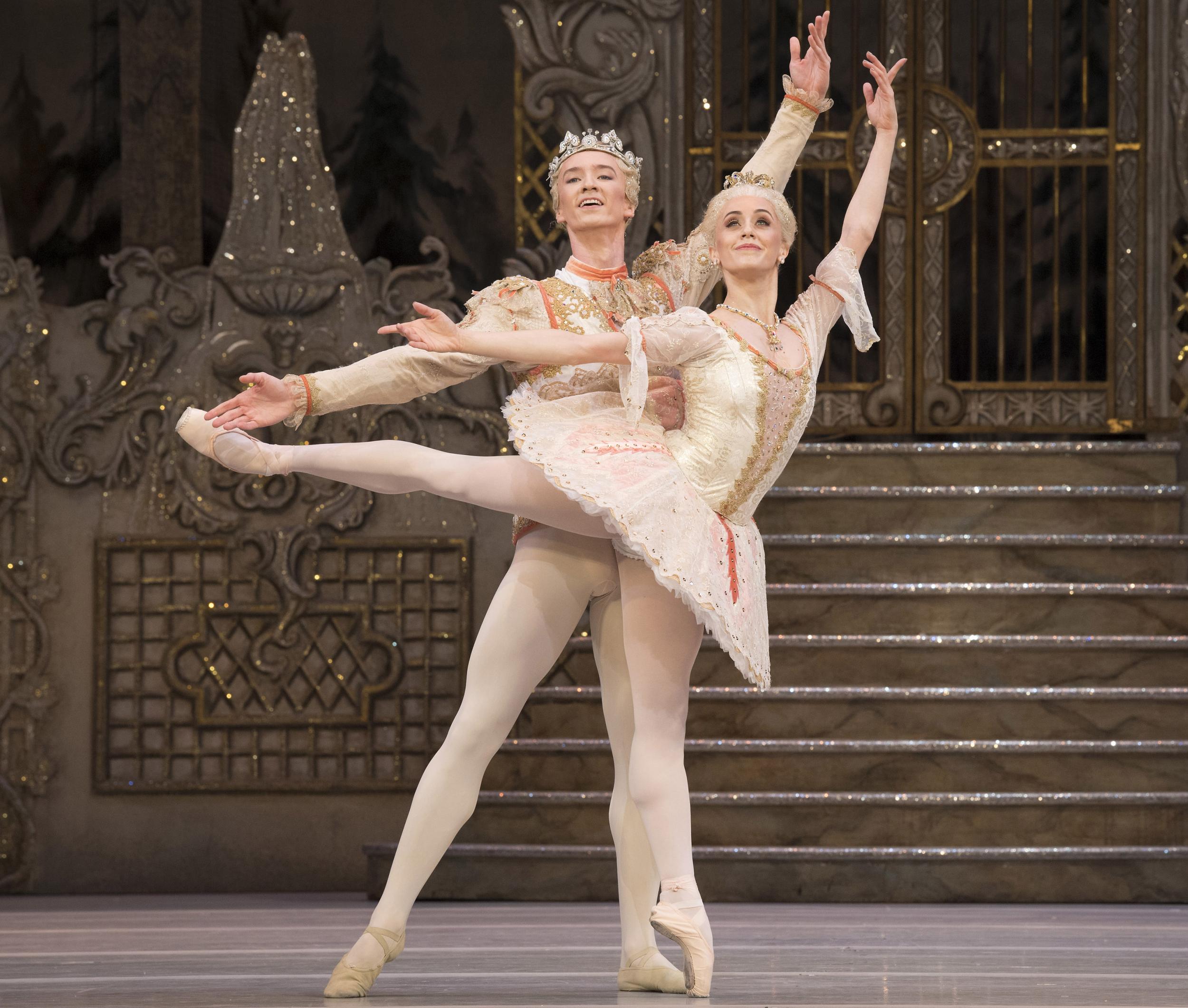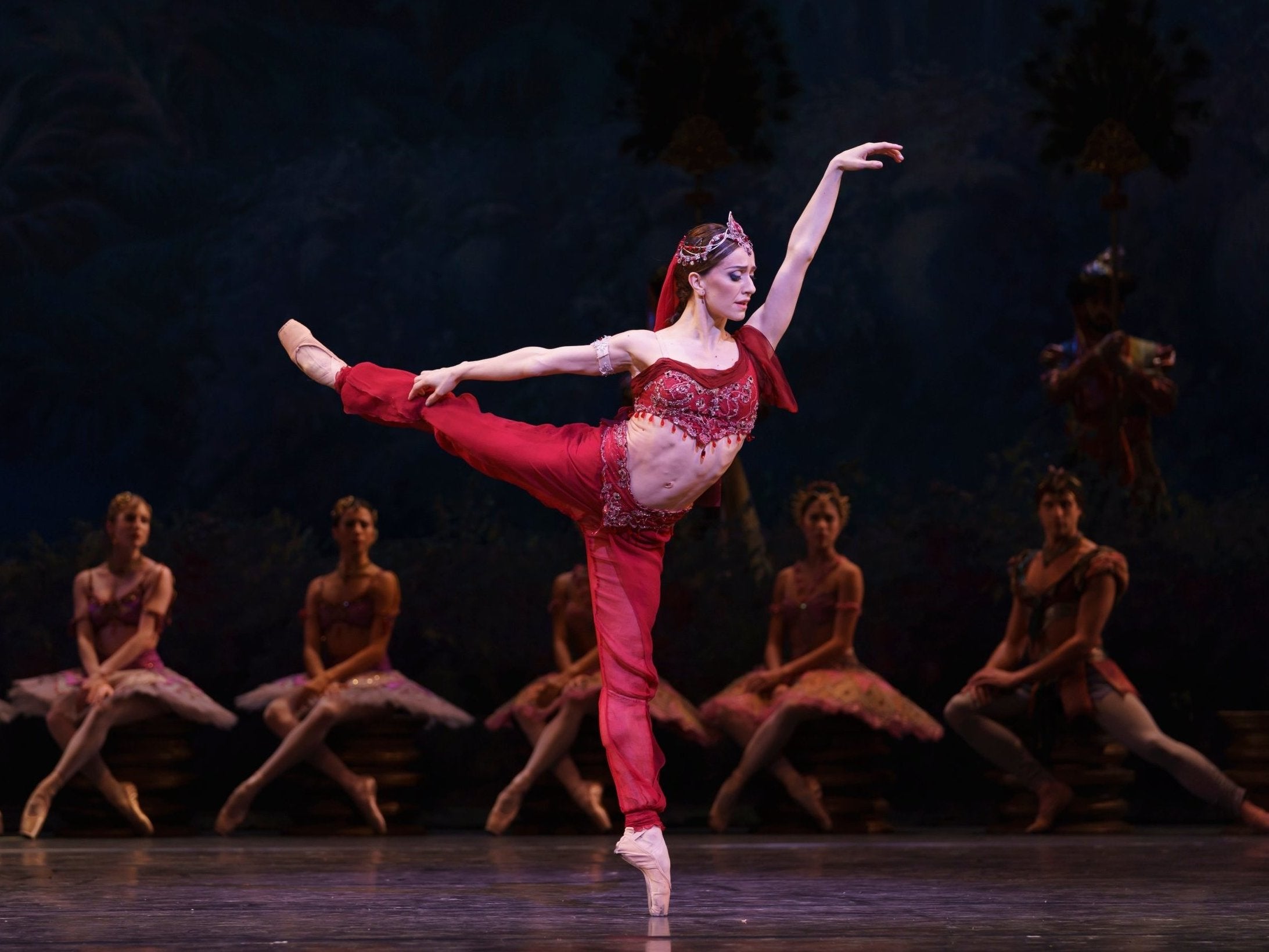Is classical ballet sexist? From Swan Lake to The Sleeping Beauty, it's time to look again at the work of Marius Petipa
The choreographer defined the romantic imagery and strict gender roles we associate with ballet. But who has the power in these pas de deux, asks Alastair Macaulay

Your support helps us to tell the story
From reproductive rights to climate change to Big Tech, The Independent is on the ground when the story is developing. Whether it's investigating the financials of Elon Musk's pro-Trump PAC or producing our latest documentary, 'The A Word', which shines a light on the American women fighting for reproductive rights, we know how important it is to parse out the facts from the messaging.
At such a critical moment in US history, we need reporters on the ground. Your donation allows us to keep sending journalists to speak to both sides of the story.
The Independent is trusted by Americans across the entire political spectrum. And unlike many other quality news outlets, we choose not to lock Americans out of our reporting and analysis with paywalls. We believe quality journalism should be available to everyone, paid for by those who can afford it.
Your support makes all the difference.The cavalier expansively offers his hand in a descending arc through the air. As the ballerina places her hand in his, she steps onto point and extends one leg behind her.
Welcome to ballet. This grandiloquent action, an archetypal example of ballet classicism, is a crucial transaction within supported adagio, that singularly momentous idiom: with the man’s assistance, a female dancer blooms all the more fully.
What does it say to us? Logically, viewers should attend above all to that joining of hands. Here’s a formal ritual of courtship, in which the woman accepts the man, at least provisionally, as a suitor. Far more powerful, though, is how, now on point, she becomes a multidimensional work of ideal geometry, sculpturally firm and theatrically radiant. No longer entirely human, she’s now also – in line, shape and projection – transcendent.
Such images abound in the work of Franco-Russian choreographer Marius Petipa (1818-1910): You can see them in the dances he made for Don Quixote, La Bayadère, The Sleeping Beauty, Swan Lake and Raymonda. They confront us with a problematic but beautiful central issue of ballet: its highly ambiguous sexism.

This year, his bicentennial, has brought Petipa conferences (at Harvard University, in Madrid, Moscow, Paris, St Petersburg); new productions of his ballets in Europe and the United States; and important Petipa revivals around the world. Attention is certainly due. More is being learned about the man, his career and his creations, so central to ballet repertory today. Still, their central feature – the radical dualism he constructs between the sexes – tends to be taken for granted.
The woman goes on point; the man does the partnering. The positions may not be reversed. What’s going on here? Is he serving her or controlling her? He subordinates himself to making her all the more spectacular, but which one is in charge? We can say that such behaviour glorifies women – or that it falsifies them. I’m among the thousands who are disarmed by it; I’m also well aware that it’s far from the behaviour I encounter anywhere today.
Petipa was the chief architect of the classic ballets I’ve named. In addition, most versions of Giselle, Paquita, Coppélia and Le Corsaire contain extensive and crucial contributions by him. And, although he was too ill to make most of the original 1892 Nutcracker, he planned its score and scenario in detail with its composer, Tchaikovsky. It’s fair to say his work remains more widely and often performed than that of any other choreographer.
George Balanchine and Frederick Ashton, the two greatest masters of ballet classicism in the 20th century, both acknowledged the vastness of their debt to him. Today’s most in-demand ballet choreographer, Alexei Ratmansky, has now devoted a large portion of his time to reviving Petipa choreography from period sources.

Who are the women in these ballets? The destiny of Aurora in The Sleeping Beauty is controlled by others. The Sugarplum Fairy in The Nutcracker is just the hostess with the mostest in the Realm of Sweets. Glorious, sparkling, full of dance variety, the heartbeats of every scene in which they appear, they’re figureheads whose inner lives remain unknown. Sure, some heroines – Nikiya in Bayadère, Odette in Swan Lake – love and trust, are betrayed and suffer.
But all these women, although doing far more of their ballets’ dancing, lead lives shaped by their men. Such was the late-19th century world that Petipa knew, in which few women shaped history or were allowed to create important art of their own.
Still, we shouldn’t assume all 19th-century ballet was like his. The works of Danish choreographer August Bournonville (1805-79) show men and women dancing together as equals. They sometimes even show women partnering men.
Bournonville was part of a Scandinavian tradition that connects to Hans Christian Andersen’s stories and Ibsen’s plays. Petipa, a Frenchman working in Imperial Russia, made no links with Dostoyevsky, Tolstoy, Mussorgsky, Chekhov. Yet it was he who created enduring classics, central to ballet tradition as Bournonville’s are not. Petipa’s ballets show the powers of his powerless women.
Petipa’s command of space and time is that of a master architect. Whether he’s handling women en masse or alone, he maps the stage with their geometries. He’s also a jeweller, presenting dancers’ bodies this way and that, as if holding gems up to the light, showing us how they refract it in different directions. And he surrounds his queen-bee heroines with retinues. The dances for the female corps de ballet often count for far more than any for the leading men.

It’s reasonable to say that Tchaikovsky’s ballet scores – The Sleeping Beauty, Swan Lake, The Nutcracker – surpass Petipa’s choreography. But that misses the point. Although Tchaikovsky’s music is marvellously evocative, it’s Petipa’s stage drama that shows us what’s at stake: a society in which men honour women, support women, frame women. He makes that seem the cornerstone not only of ballet but of psychology and civilisation, too.
He shows us supported adagio as something that transports a hero when he envisions it (Don Quixote, La Bayadère, The Sleeping Beauty); something a heroine dreams about (Raymonda) as her shining hope; something children are shown as a peak of wonderland (The Nutcracker); something that happens in both courts (Swan Lake) and villages (Coppélia). Upon the foundation of this male-female negotiation, Petipa constructs the rest of almost every act – the central suite of classical dances with their solo variations, and coda, the other ensembles in various styles, the mime scenes, and more.
In life, Petipa’s view of the sexes was more complex. Many female dancers in Russia were high-class courtesans, feted by generous admirers, whose gifts of jewels then adorned their costumes like trophies. At the St Petersburg premiere of Swan Lake, in 1895, Petipa’s daughter Marie (1856-1930) was only a supporting dancer, yet she wore jewels estimated at tens of thousands of rubles. Like prima ballerinas, she could wield influence beyond her father’s.
The first full-length biography of the choreographer, Marius Petipa: The Emperor’s Ballet Master by Nadine Meisner, is to be published in June by Oxford University Press. The most disturbing of its revelations is the formal complaint written in 1867 by Petipa’s wife, Maria Surovshchikova (1836-82), soon after she left him. She had been his muse, dancing the lead role (often with him as her stage partner) in ballets from 1855 to 1866.

In this document, she said that during 10 years of married life, her husband assaulted her every week, “leaving consequences for my already weak health”. According to her account, these often took place before their children and servants; Maria left him after an incident in which he began to throttle her and spit at her. It seems that he was maddened by jealousy; her many admirers were more than he could bear. (The case was settled out of court – thereafter, they led separate lives.)
Though we have only her word for that complaint – and though Petipa’s ballets can’t readily be said to abuse or demean women – his temper was known to be atrocious. Will we ever understand him?
Having moved to Russia in 1847, Marius Petipa became the country’s senior ballet master by 1870. The Russian authorities, giving him resources beyond those of other nations, expected him to fill the stage with spectacle, bravura display and vast numbers of dancers. This probably turned him into an artist different from the one he would like to have been. In 1875, when Bournonville visited Russia, Petipa admitted to him that the showy irrelevances that cluttered his ballets were to satisfy the public and those in power, but against his own artistic instincts.
Yet Petipa was one of history’s great survivors; he outlived all the western ballet masters of his youth and middle age. Far more of his choreography survives, too. Thanks in large part to his legacy, ballet became internationally known as a Russian art. The lineage of Russian ballet luminaries – Pavlova, Nijinsky, Balanchine, Nureyev, Makarova, Baryshnikov – is one descended from Petipa.
While many of his Russian artist contemporaries (Dostoyevsky, Repin, Mussorgsky, Tolstoy, Borodin, Rimsky-Korsakov) were pursuing a cult of Russian subject matter for Russian people, Petipa kept looking to the west, pursuing art for art’s sake. This made him something of a kindred spirit to his later composer colleagues Tchaikovsky and Glazunov; and, in due course, a precursor of the modernism of Stravinsky and Balanchine. Many of his narrative works anticipate the plotless ballets of today. The story slows or stops; the dance flowers; a Romantically classical vision of womanhood is at the centre of the frame.
Feminist Germaine Greer once argued that Shakespeare, in his comedy The Taming of the Shrew, gave to its tamed heroine Kate a final speech that’s “the greatest defence of Christian monogamy ever written”. We may claim the same for the heroines of Petipa’s wordless ballets. They live only for marriage and (even beyond their mate’s adultery and the grave) true love; yet they rule space, time, music and drama like monarchs. They’re the objects and the justification of Romantic chivalry at its most precariously sublime.
© The New York Times
Join our commenting forum
Join thought-provoking conversations, follow other Independent readers and see their replies
Comments